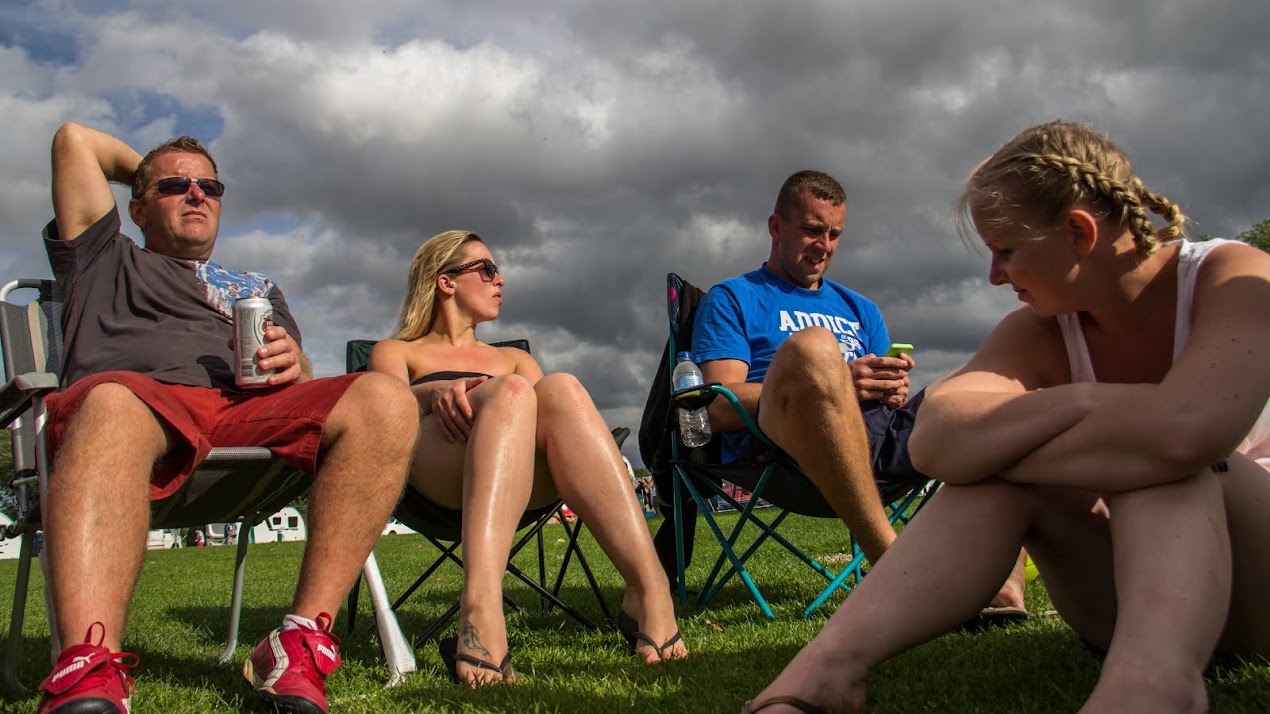The Photography Matters
symposium in Doncaster was my first official OCA visit, featuring five speakers
from within the OCA. Content was extremely varied, covering technical, physical
and social aspects of photography and how it has been used over time. The two
speakers that resonated with me the most were Les Monaghan and Dawn Woolley;
both speakers spoke of issues I felt connected to and have made me think differently
about the power photography can have on both the conscious and subconscious
mind.
Les Monaghan - Is it
fair?
The question asked from
Les, using Don McCullin’s shell shocked soldier as an example. Les has
experienced at least one circumstance in which he chose not to press the
shutter mainly due to a feeling that his creation of the image didn’t feel fair
on the people in question.
Les spoke of his latest
work, The Desire Project; a piece in which he asked customers of a local
shopping centre, ‘What do you want?’ Although the question was asked to
individual shoppers, as they hang on the wall side by side, collective themes
of health, happiness, acceptance and community shine through.
Les thought deeply
about fairness in the creation of this series; while viewing the work on the
walls of the shopping centre, he discussed his methods and ,motivations. All
shoppers who took part in the project chose to take part, knowing exactly how
and where their images would be displayed. A lot of time was given to actually
think about the question and how they would like to answer it. Les made sure
that whatever answer the shopper gave, they fully understood that this
statement would be on the wall directly under their feet.
The final selection of
over seventy images was chosen by Les, which could have lead to a biased
leaning towards his chosen sentiments. We were told, however that most of the
portraits that didn’t make it to the wall were very similar to those that did,
if anything, there was a larger sway to those wanting world peace; a sentiment
which filled a large proportion of the series anyway.
To hear Les discuss his
work in the Frenchgate Shopping Centre, while viewing his work and shoppers who
could have potentially been part of the work walked past was the highlight of
the day for me. I came away with a good insight into who Les Monaghan is, what
he feels passionate about and how he uses that passion in his photography.
Dawn Woolley
As Dawn began
discussing her work, I got the feeling that it was going to be a fairly
uninspiring piece, wrapped up in very flowery language. The language remained
flowery but I was very wrong about the content; in fact the only reason I
couldn’t wait until the end was to get outside and discuss it further with other
students.
Having teenaged
children as well as working in a secondary school, my world is filled with
stories of the micro-celebrity, although none of that generation see them this
way. Having recently created a video using YouTube clips for a school assembly,
it was clear from the reactions of three hundred fifteen year olds that these
people are known to EVERYONE; well, as long as you’re under twenty.
As Dawn suggested,
using Rachel Wong as an example, the filter we have all developed to enable us
to ignore adverts is being bypassed as advertising gets sneaky. Micro-celebs
chat as if they are your best friend, telling you about the latest lipstick
they just bought. This tactic echoes in my family life as my daughter’s
favourite micro-celebs, The Sidemen chat in their gaming videos about going for
a cheeky Nando’s, vlogging their visits to such places, wearing particular
brands which their fans love to follow; and it’s possible too because they just
dropped into the conversation the shop they bought it from.
Dawn also used the
advertising of Dolce and Gabbana to highlight how they use the selfie in their
advertising. Models, both male and female are captured in a slightly parodic
street scene, performing very cliched activities which younger generations
connect with such as taking selfies. Dawn’s analysis of the situation is that
the act of the models taking the selfie connects the scene to the viewer’s
world. The viewer imagines their own self in the phone screen, wearing the
model’s outfits and accessories, living their life. The act of taking selfies
is so prevalent now that everyone can connect with this scene, no matter what
their lifestyle or hobbies and interests.

No comments:
Post a Comment